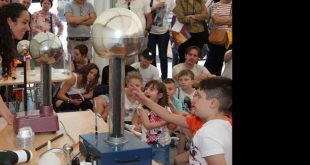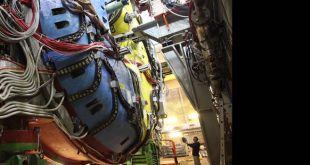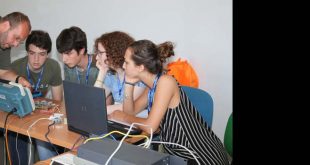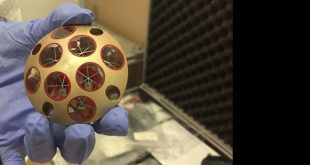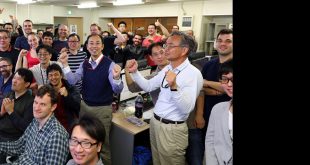Again this year the Frascati National Laboratories had the chance to contribute to the growth of the interest of young generations in the fascinating and complex world of particle physics.
Read More »News
LATINO: a laboratory for research and innovation
The Regione Lazio will co-finance – for an amount of 1.7 ME – the project LATINO: A Laboratory in Advanced Technologies for INnOvation, aimed at creating a facility at Frascati National Laboratories (LNF) which will provide the scientific community and companies with technologies and expertise developed for particle accelerators.
Read More »The KLOE detector bows out
After twenty years of distinguished career (see http://agenda.infn.it/event/kloe2closing) and while the analyses of the data just collected by KLOE-2 are still ongoing, the KLOE detector bows out and is “parked” in the hall adjacent to the DAFNE building.
Read More »Summer School 2018
Again this year the Frascati National Laboratories get ready to host about 100 high school students from all over Italy.
Read More »Third appointment with SeminarIndustriali 2018
On the next 25th of June (10 a.m.), at National Laboratory of Frascati (LNF), it will be held a new date of SeminarIndustriali 2018, an initiative aiming at communicating the main innovations in the field of Technology Transfer and promoting the dialogue among the world of research, companies and society.
Read More »A reflector for the Martian lander made in LNF
On the 5th of May at 4.05 am the NASA Martian lander InSight was successfully launched from the American Vandenberg Air Force Base in California. The event took place in the presence of researchers and Members of the space agencies of the countries participating in the mission, among which France, Germany, Switzerland and Italy.
Read More »Science gender and new generations – second day devoted to gender equality in physics
On the 16th of May 2018 at the INFN Frascati National Laboratories will be held the second day devoted to gender equality in physics, result of a collaboration between the National Institute for Nuclear Physics (INFN) and the National Research Council (CNR).
Read More »LNF & UNDERGRADUATE STUDENTS
On the next 17th of May undergraduate students attending a scientific degree course are invited to participate in the event LNF & Undergraduate Students, a new initiative by INFN Frascati National Laboratories (LNF), aiming at orienting them on master thesis.
Read More »SuperKEKB first collisions
On the 25th of April the SuperKEKB accelerator in the KEK Laboratory in Tsukuba, Japan, produced its first electron-positron collisions. The Belle II detector, installed in the interaction point of the two particle beams, observed the first events deriving from the electron-positron annihilation.
Read More »OpenLabs 2018 – Accelerating the Future
OpenLabs – Accelerating the Future On Saturday 26th of May 2018 INFN – Frascati National Laboratories Free entry from 10,00 am to 8,00 pm to every scheduled event
Read More » INFN-LNF Laboratori Nazionali di Frascati
INFN-LNF Laboratori Nazionali di Frascati
